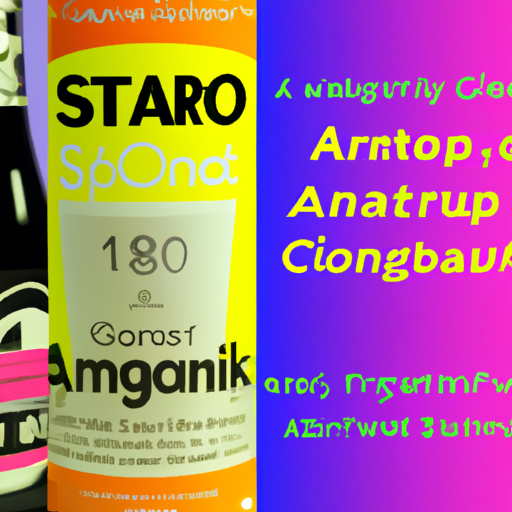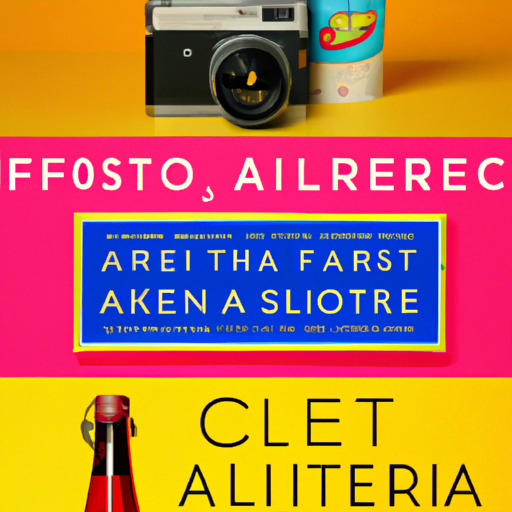
-
Table of Contents
- The Impact of Typography in Food and Beverage Branding
- The Power of Typography
- Case Studies: Successful Typography in Food and Beverage Branding
- 1. Coca-Cola
- 2. Starbucks
- 3. Ben & Jerry’s
- The Psychology of Typography in Food and Beverage Branding
- The Role of Typography in Packaging Design
- Conclusion
The Impact of Typography in Food and Beverage Branding

Typography plays a crucial role in the success of food and beverage branding. It is not just about choosing a font; it is about creating a visual identity that resonates with consumers and communicates the brand’s values. In this article, we will explore the impact of typography in food and beverage branding and how it can influence consumer perception and purchasing decisions.
The Power of Typography
Typography is more than just the selection of fonts; it is a powerful tool that can evoke emotions, convey messages, and create a distinct brand identity. When it comes to food and beverage branding, typography can make or break a product’s success. Here are some key ways typography impacts consumer perception:
- Brand Personality: Typography can help establish a brand’s personality and differentiate it from competitors. For example, a playful and whimsical font may be more suitable for a children’s snack brand, while a sophisticated and elegant font may be better suited for a high-end wine label.
- Legibility: The legibility of typography is crucial in food and beverage branding. Consumers need to be able to read and understand the product’s name, ingredients, and other important information easily. A font that is difficult to read can lead to confusion and frustration, ultimately impacting the consumer’s perception of the brand.
- Emotional Connection: Typography has the power to evoke emotions and create a connection with consumers. Different fonts can convey different feelings, such as trust, excitement, or nostalgia. By carefully selecting the right typography, brands can tap into the emotions of their target audience and create a stronger bond.
Case Studies: Successful Typography in Food and Beverage Branding
Let’s take a look at some real-life examples of how typography has played a significant role in the success of food and beverage branding:
1. Coca-Cola
Coca-Cola is a prime example of how typography can become an iconic part of a brand’s identity. The company’s logo, featuring the distinctive cursive font, has remained virtually unchanged for over a century. The typography evokes a sense of nostalgia and tradition, making consumers feel connected to the brand’s heritage.
2. Starbucks
Starbucks is another brand that has successfully used typography to create a unique identity. The company’s logo, featuring a circular emblem with the word “Starbucks Coffee” around it, uses a custom-designed font. The typography conveys a sense of warmth and friendliness, aligning with the brand’s mission to create a welcoming and inclusive environment.
3. Ben & Jerry’s
Ben & Jerry’s, known for its quirky and fun ice cream flavors, uses typography to reinforce its brand personality. The company’s logo features a playful and hand-drawn font that reflects the brand’s commitment to creativity and individuality. The typography sets the tone for the brand and creates a memorable visual identity.
The Psychology of Typography in Food and Beverage Branding
Typography has a profound impact on consumer psychology, influencing their perception and purchasing decisions. Here are some key psychological factors to consider when selecting typography for food and beverage branding:
- Color: The color of typography can evoke specific emotions and associations. For example, red typography may create a sense of excitement and energy, while green typography may convey freshness and healthiness. Brands should consider the psychological impact of color when choosing typography.
- Font Style: Different font styles can convey different messages. Serif fonts, with their decorative strokes, are often associated with tradition and elegance, while sans-serif fonts are seen as modern and clean. Brands should select font styles that align with their desired brand image.
- Hierarchy: The hierarchy of typography, such as font size and weight, can guide consumers’ attention and emphasize important information. Brands should use hierarchy strategically to highlight key messages and make them more memorable.
The Role of Typography in Packaging Design
Typography is not limited to logos and brand names; it also plays a crucial role in packaging design. Packaging is often the first point of contact between consumers and a product, and typography can make a significant impact on the consumer’s decision to purchase. Here are some key considerations for typography in packaging design:
- Readability: Packaging typography should be easily readable, even from a distance. Consumers should be able to quickly identify the product and its key information, such as flavor, ingredients, and nutritional facts.
- Consistency: Typography should be consistent across different packaging elements, such as labels, tags, and product descriptions. Consistency helps create a cohesive brand identity and makes it easier for consumers to recognize the product on shelves.
- Differentiation: Typography can help differentiate products within a brand’s lineup. By using different fonts or font variations, brands can create visual distinctions between flavors, variants, or product lines.
Conclusion
Typography is a powerful tool in food and beverage branding. It can shape a brand’s personality, evoke emotions, and influence consumer perception and purchasing decisions. By carefully selecting typography that aligns with their brand values and target audience, food and beverage companies can create a strong visual identity that resonates with consumers. Whether it’s the iconic cursive font of Coca-Cola or the playful hand-drawn typography of Ben & Jerry’s, typography plays a crucial role in creating a lasting impression and building brand loyalty.
